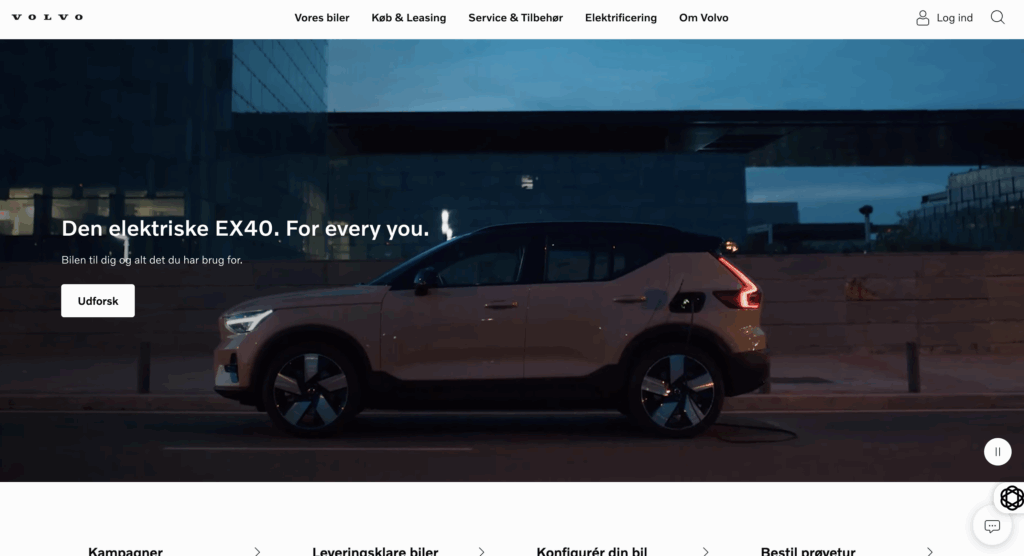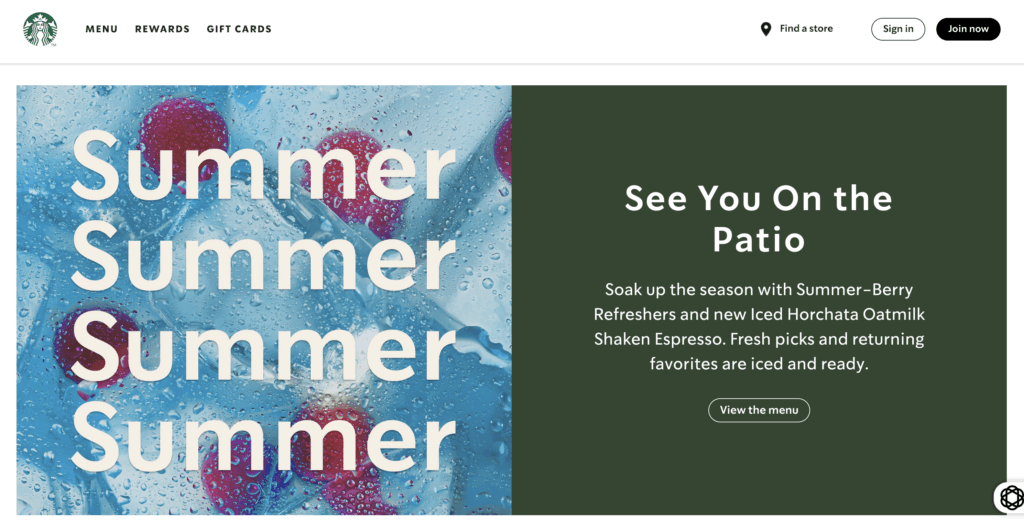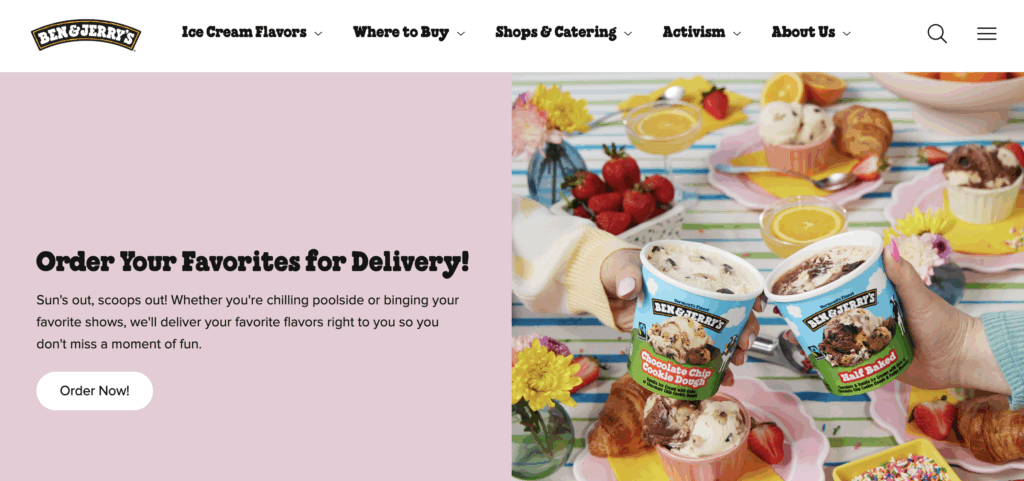Every brand dreams of staying top of mind, resonating with customers, and outpacing competitors. But how do you know if your brand is truly healthy? Enter brand health tracking. From top-tier enterprises to budding startups, understanding brand vitality can make or break your success. In this guide, we'll dive into what is brand health tracking, why it matters, and how to leverage it to fuel growth and loyalty. Ready to uncover the secrets behind a thriving brand? Let's get started.
What is Brand Health Tracking?
Simply put, it's an ongoing process of evaluating how your brand is perceived by your target audience, its market position, and performance across various channels. By regularly measuring key indicators like awareness, perception, loyalty, and equity, you can spot issues before they escalate and capitalize on strengths that drive growth. With brand health tracking, businesses stay agile, adapting to market shifts and customer sentiment shifts.
Why Brand Health Tracking Matters
- Adapt to Dynamic Consumer Opinions: Consumers constantly form and reshape opinions based on experiences, social conversations, and cultural trends. Brand health tracking helps you stay attuned to these shifts.
- Monitor Customer Perceptions: Gain insights into how customers view your brand at any given time, ensuring you catch potential issues like negative sentiment spikes early.
- Assess Competitive Standing: By tracking market position and competitor benchmarks, you can identify opportunities to differentiate and areas where you may be lagging.
- Inform Strategic Decision-Making: Integrating brand health data into strategy ensures marketing budgets are spent wisely, with campaigns tailored to current brand strengths and weaknesses.
- Identify Threats & Opportunities: Early detection of eroding loyalty or rising negative sentiment allows for proactive measures, while spotting areas of growth helps capitalize on positive momentum.
- Enhance Product Launch Success: Whether launching a new product or revitalizing an existing one, insights from brand health tracking guide positioning and messaging for maximum impact.
- Drive Smarter Resource Allocation: Allocate marketing spend based on real-time data, invest where your brand needs reinforcement, and pull back where it's already strong.
- Improve ROI: Constant insight into your brand's vitality translates into more effective campaigns, higher customer engagement, and better returns on investment.
Key Brand Health Metrics to Track
To gain a clear, actionable view of your brand's performance, we've organized these 17 metrics into four categories. Each metric includes a concise definition, how to measure it, and why it matters. This structure reduces overlap and ensures clarity.
| Metric | What It Measures | Why It Matters | How to Measure |
| Brand Recall | Unprompted/prompted brand recognition | Reflects market visibility | Customer surveys |
| Brand Attributes | The traits customers associate with your brand | Shapes perception and differentiation | Focus groups, open-ended surveys |
| Brand Association | Emotional and mental connections to the brand | Drives loyalty and meaning | Qualitative research |
| Sentiment | Tone of consumer conversations (positive/neutral/negative) | Indicates public opinion on health | Social media tools, reviews |
| Net Promoter Score (NPS) | Likelihood of recommending the brand | Strong predictor of loyalty | 0-10 scale survey |
| Brand Usage | Frequency and context of use | Reflects stickiness and relevance | Usage analytics, surveys |
| Time on Site | The time visitors spend on your website | Signals engagement and content relevance | Google Analytics |
| Returning Visitors | Visitors coming back to your site | Measures interest and loyalty | Website analytics |
| Social Reach | Number of people seeing your content | Expands brand visibility | Social media metrics |
| Share of Voice (SOV) | Brand presence compared to competitors | Indicates market dominance or lack thereof | Social listening platforms |
| Employee Engagement | Staff enthusiasm and brand belief | Impacts customer service and advocacy | Internal surveys |
| Brand Loyalty | Repeat purchasing and advocacy | Key for customer lifetime value | CRM, loyalty program data |
| Purchase Intent | Likelihood of future purchase | Forecasts sales pipeline | Surveys |
| Total Brand Equity | Overall market and consumer-perceived value | Assesses long-term brand value | External valuation reports |
| Brand Lift | Change in brand metrics from marketing efforts | Measures campaign effectiveness | Pre and post-campaign surveys |
| Brand Uplift | Increase in awareness or favorability after a campaign | Tracks immediate campaign impact | Digital analytics, survey comparison |
Brand Recall (Unprompted & Prompted)
- Unprompted Recall: When customers mention your brand first without any cues (e.g., "Apple" when asked about smartphones).
- Prompted Recall: When customers recognize or choose your brand from a given list (e.g., selecting "Nike" from a list of athletic brands).
Example: In an unprompted recall test, 40% of participants say "Coca-Cola" first when thinking of soda brands, showing its top-of-mind presence.

Brand Attributes
Character traits customers associate with your brand, such as "innovative," "reliable," or "eco-friendly."
Example: Tesla is often linked with "innovation" and "sustainability"-two attributes that define its brand perception.
Brand Association
The mental links or emotional connections customers make with your brand (e.g., linking "Disney" with "magic" or "family fun").
Example: When people hear "Volvo," they often think of "safety" and "reliability," reflecting strong brand associations.

Sentiment (Positive/Negative/Neutral)
Definition: The overall tone of customer conversations about your brand-positive (e.g., praise), negative (e.g., complaints), or neutral (e.g., informational).
Example: During a product launch, if social media sentiment is 75% positive, it signals a favorable reception.
Net Promoter Score (NPS)
A loyalty metric indicating how likely customers are to recommend your brand on a 0-10 scale; categories: promoters (9-10), passives (7-8), detractors (0-6).
Example: If 60 out of 100 customers rate you 9 or 10, and 20 rate you 0-6, your NPS is 40 (60% promoters minus 20% detractors).
Brand Usage
How often and in what context customers use your product or service (e.g., daily vs. occasional usage).
Example: Spotify tracks that users listen to music daily, indicating high brand usage and stickiness.

Read more: Usage and Attitude (U&A) Study: How to Understand Consumer Behavior
Time on Site
The average length of time visitors spend on your website during a single session, reflecting engagement.
Example: A blog that maintains an average time on site of 5 minutes suggests its content resonates with readers.
Returning Visitors
The portion of website visitors who come back to your site after their first visit, showing sustained interest.
Example: If 30% of visitors return within a month, it indicates a loyal audience base.
Social Reach
The total number of unique individuals exposed to your brand's content on social platforms indicates potential visibility.
Example: An Instagram post with a reach of 10,000 means 10,000 unique users saw it, even if they didn't engage.
Share of Voice (SOV)
Your brand's share of the total category conversations or advertising impressions compared to competitors (e.g., 25% SOV in tech news coverage).
Example: If out of 1,000 industry mentions, 300 are about "Samsung," Samsung's SOV is 30%.

Employee Engagement
The level of commitment and enthusiasm employees have toward your brand influences customer experience.
Example: A company with 90% employee engagement often sees better customer service metrics and lower turnover.
Brand Loyalty
The degree to which customers consistently choose your brand over competitors, seen through repeat purchase behavior.
Example: Starbucks patrons who buy coffee weekly demonstrate strong brand loyalty.
Purchase Intent
The likelihood that customers plan to buy your product or service soon, often gauged in surveys.
Example: If 50% of surveyed customers say they're "very likely" to buy next quarter, it forecasts strong sales.
Total Brand Equity
An overall estimate of brand value as an asset, factoring in market share, pricing power, and customer perceptions.
Example: Interbrand's annual report values Apple's brand equity at over $200 billion, reflecting its premium status.
Brand Lift
The increase in metrics like awareness, favorability, or intent directly attributable to a marketing campaign (e.g., an ad driving a 10% rise in awareness).
Example: After a summer campaign, a beverage brand sees awareness rise from 50% to 65%, indicating a 15-point brand lift.
Brand Uplift (Post-Campaign Impact)
Specific measurement of changes in key metrics, such as recall or consideration, after a campaign launches (closely related to brand lift).
Example: A tech gadget's pre-launch awareness at 20% increases to 35% after social ads, showing a 15% post-campaign uplift.
Methods of Measuring Brand Health
Selecting the right methods for brand health tracking ensures you collect accurate, actionable data. Below, we'll walk through popular techniques used in a typical brand health tracking study.
Surveys and Questionnaires
Surveys and questionnaires are structured tools designed to gather direct feedback from customers about their perceptions, experiences, and attitudes toward a brand. They can assess various aspects such as brand awareness, satisfaction, loyalty, and purchase intent.
Real-World Example:
Coca-Cola employs regular consumer surveys to monitor its brand's health. These surveys measure brand recall- how often consumers think of Coca-Cola when considering soft drinks- and brand sentiment, capturing how people feel about the brand. This continuous feedback helps Coca-Cola maintain a strong connection with its audience and adjust marketing strategies accordingly.
Social Media Monitoring and Sentiment Analysis
This method involves tracking and analyzing conversations about a brand across social media platforms to gauge public sentiment. Tools like Brandwatch and Sprout Social can identify trends, measure engagement, and assess the overall tone (positive, negative, neutral) of brand mentions.
Real-World Example:
Starbucks effectively utilized social media monitoring during a reputational crisis when an incident in a Philadelphia store led to widespread backlash. By promptly addressing the issue through public apologies and policy changes, Starbucks managed to mitigate negative sentiment and demonstrate responsiveness to public concerns.

Customer Feedback and Reviews
Analyzing customer reviews and feedback provides insights into customer satisfaction and areas needing improvement. Platforms like Trustpilot and ReviewTrackers aggregate reviews, allowing brands to monitor and respond to customer opinions effectively.
Real-World Example:
Amazon continuously monitors customer reviews and ratings across its platform to track customer satisfaction and product reputation. This feedback loop enables Amazon to identify areas for improvement, whether related to product quality or delivery service, ensuring a high level of customer satisfaction.
Sales Data and Metrics
Sales data offers quantitative insights into brand performance, reflecting customer purchasing behavior. Metrics such as sales volume, revenue growth, and market share help assess the effectiveness of branding and marketing efforts.
Real-World Example:
Ben & Jerry's analyzed sales data in conjunction with social listening insights to understand purchasing patterns. They discovered that demand for ice cream increased during rainy weekends, contrary to expectations. This insight led to targeted marketing campaigns during such periods, resulting in increased sales.

Third-Party Brand Health Reports
External reports and benchmarks provide comparative analyses of brand performance within an industry. Organizations like Nielsen and Kantar offer studies that evaluate brand equity, consumer perceptions, and market positioning.
Real-World Example:
ONE Championship, a martial arts organization, partnered with GWI to conduct a brand tracking study aimed at understanding its perception in the U.S. market. The insights gained from this study informed strategic decisions, leading to a 46% increase in U.S. viewership over six months.
Benefits of Brand Health Tracking
Understanding the benefits of tracking the health of your brand can motivate organizations to invest in consistent brand health tracking. Let's explore why this practice is invaluable.
- Identify Strengths & Weaknesses: Target high-impact areas to reinforce or improve.
- Drive Strategic Positioning: Keep your messaging in sync with customer expectations.
- Optimize Spend: Focus budgets on areas with the highest potential lift.
- Manage Crises: Spot negative sentiment early to take swift corrective action.
Challenges in Brand Health Tracking
While monitoring your brand's vitality is critical, several challenges can complicate the process.
- Data Overload: Prioritize signal over noise using dashboards and clear frameworks.
- Choosing the Right Metrics: Focus on outcomes tied to business goals, not vanity metrics.
- Maintaining Consistency: Conduct regular tracking to stay current.
- External Market Changes: Always interpret data in a real-world context.
How to Launch a Brand Health Tracking Program (Clear Step-by-Step Guide)
A brand health tracking program helps you measure perception and performance. Follow these steps to build a clear, insight-driven system.
Step 1: Define What You Want to Measure
Before you begin, be clear about what "brand health" means to your business. This usually includes:
- Brand Awareness - Do people know your brand exists?
- Brand Perception - What do they think or feel about your brand?
- Consideration - Would they choose your brand over others?
- Customer Loyalty - Will they keep coming back?
- Brand Advocacy - Will they recommend you to others?
Step 2: Choose the Right Metrics
Now, pick the specific metrics you'll track for each area:
| Area | Metrics You Can Use |
| Awareness | Aided & unaided brand awareness |
| Perception | Brand sentiment, trust score, and emotional image |
| Consideration | Purchase intent, brand preference |
| Loyalty | Repeat purchase rate, churn rate |
| Advocacy | Net Promoter Score (NPS), referrals |
Don't overcomplicate it - focus on brand health tracking metrics and choose the most meaningful 2-3 metrics per area.
Step 3: Decide How You'll Collect the Data
Use a mix of these three methods:
- Surveys (the most important method)
- Ask your target audience how they feel about your brand.
- Do this regularly - e.g., every quarter.
- Ask your target audience how they feel about your brand.
- Social Listening
- Track what people are saying about your brand online.
- Tools: Brandwatch, Sprout Social, Meltwater, etc.
- Track what people are saying about your brand online.
- Web & Search Data
- Use Google Trends, direct traffic, and branded search volume as indicators of brand interest.
- Use Google Trends, direct traffic, and branded search volume as indicators of brand interest.
Step 4: Set a Regular Tracking Schedule
Brand tracking isn't a one-time thing. It only works if you track consistently over time.
- Surveys: Run quarterly or biannually.
- Social/online metrics: Monitor monthly or continuously.
- Benchmarks: Use your first wave of data to set a baseline.
The goal is to spot trends, not just look at single data points.
Step 5: Analyze and Share the Insights
Don't just collect the data - use it.
- Look for big changes (good or bad) in key metrics.
- Segment the data by age, region, product, etc.
- Share findings with teams across your business:
- Marketing: for campaign planning
- Product: for customer feedback
- Leadership: for strategic decisions
- Marketing: for campaign planning
Use dashboards or tools like Google Data Studio, Tableau, or Looker to visualize trends clearly. To effectively monitor and enhance your brand's health, it's crucial to gather and analyze consumer feedback.
Explore Peekage's consumer insight solutions to gain valuable data on how your products are perceived in real-world settings.
Step 6: Take Action Based on What You Learn
If your brand perception is slipping, adjust your messaging.
If awareness is low, increase brand-building campaigns.
If NPS is dropping, improve the customer experience.
This is the most important step: Brand tracking should drive actual decisions.
Step 7: Improve and Adapt Over Time
Your program will evolve. As your brand grows or your strategy shifts:
- Add new metrics when needed.
- Adjust your questions to fit your goals.
- Integrate new tools (like AI sentiment tracking or first-party data analysis).
Keep improving - but stay consistent enough to compare over time.
How to Heal a Sick Brand: A Step-by-Step Recovery Plan
When your brand is losing relevance, trust, or market share, it's a signal: your brand is sick. But the good news? With the right diagnosis and treatment plan, most brands can recover and come back stronger. Recent brand health tracking research shows that consistent measurement leads to better brand performance. This makes brand health tracking not just a diagnostic tool, but a growth strategy.
Step 1: Diagnose the Problem
Before you try to fix anything, figure out what's actually wrong. Common symptoms of a "sick" brand:
- Declining sales or engagement
- Negative customer sentiment or PR issues
- Low brand awareness in key markets
- Brand confusion or identity mismatch
- Customers switching to competitors
How to Diagnose:
- Brand health tracking (awareness, perception, NPS, etc.)
- Customer feedback (surveys, interviews, reviews)
- Competitor analysis (what are they doing better?)
- Internal brand audit (is your messaging still clear and consistent?)
Running a detailed brand health tracking survey gives you direct insight into customer perception and emotional connection. For reliable insights, always use validated brand health tracking methods with proven survey design and sampling practices.
Step 2: Reconnect with Your Core Identity
Sick brands often lose sight of who they are. Revisit your brand's foundation:
- Why do you exist? (Purpose)
- What makes you different? (Positioning)
- What do you promise customers? (Value proposition)
- How do you sound and look? (Voice, tone, visual identity)
Ask: Is our brand still aligned with what today's customers care about?
Step 3: Fix What's Broken (Internally and Externally)
Now you know what's wrong, take action on both inside and outside your brand:
Internal (Brand Infrastructure):
- Update your brand strategy: Positioning, tone, mission
- Train your team: Make sure everyone lives the brand
- Fix the customer experience: Broken brand promises destroy trust
External (Brand Expression):
- Refresh messaging: Clear, consistent, and relevant language
- Redesign visuals (if needed): Modernize your logo, packaging, or website
- Rebuild trust: Be transparent, apologize if needed, and demonstrate action
Automated brand health tracking systems can streamline data collection and reduce human error, allowing faster decision-making.
Read more: Brand Insights: How to Turn Consumer Data Into Explosive Growth
Step 4: Relaunch with Purpose
Don't just "rebrand" - reintroduce your brand with meaning.
- Share your story: What you've learned and how you're improving
- Lead with values: Show how your brand aligns with customer beliefs
- Use targeted campaigns: Focus on re-engaging lost segments or loyal customers
Pro tip: Launch a "we heard you" campaign - it shows humility, accountability, and a customer-first mindset.
Read more: 30 Most Inspiring Brand Activation Ideas to Boost Audience Engagement
Step 5: Monitor Recovery Progress
Set clear KPIs to track your brand's recovery:
- Brand sentiment
- NPS and customer satisfaction
- Sales growth in key segments
- Website traffic and social engagement
- Customer retention or churn reduction
Create a clear brand health tracking report to share insights with leadership and track progress over time. You can also use third-party brand health tracking services for unbiased data and expert analysis.
Step 6: Stay Consistent and Keep Listening
One-time fixes don't work. To stay healthy:
- Keep delivering on your brand promise
- Listen continuously (via brand tracking or social monitoring)
- Innovate with purpose, not just to follow trends
Your goal: Build long-term brand health tracking strategies that evolve with market trends and customer behavior. Long-term brand resilience - the ability to adapt without losing your identity.
In Summary: The Brand Recovery Checklist
- Diagnose the issue (with data and feedback)
- Reconnect with your core identity
- Fix internal and external issues
- Relaunch with a meaningful message
- Track recovery with clear metrics
- Commit to long-term consistency and listening
Real-Life Examples of Successful Brand Health Tracking
Netflix: In 2022, Netflix used brand health tracking data from YouGov and social listening tools to understand sentiment around password-sharing policies. Initial backlash was detected early, allowing Netflix to adjust messaging and implement regional tests. These insights helped shape a global rollout that preserved subscriber growth, with a reported net gain of 5.9 million subscribers in Q2 2023.
Nike: Nike has long used a combination of NPS surveys and real-time digital sentiment analysis. Following their Colin Kaepernick campaign in 2018, Nike observed a polarized sentiment spike but relied on brand health data to measure long-term loyalty. Sales increased by 31% over Labor Day weekend following the campaign, showing the power of aligning brand values with customer sentiment.
Patagonia: The outdoor brand utilizes consistent brand health tracking to monitor consumer loyalty and brand perception. After announcing its earth-focused restructuring in 2022 (donating profits to environmental causes), positive sentiment and brand equity surged. According to Kantar, Patagonia ranked among the top brands for purpose-driven equity that year.
Lessons Learned:
- Monitor sentiment before and after controversial or bold campaigns.
- Use data to guide strategy and messaging adjustments.
- Consistency in brand values strengthens loyalty over time.
- Brand health tracking validates long-term branding decisions.
Conclusion
In summary, a robust brand health tracking approach helps you stay ahead of market shifts, maintain strong customer relationships, and optimize resources. Whether you use surveys, social listening, or third-party reports, the insights from a brand health tracking study can guide smarter decisions. Start simple, focus on key metrics, and iterate over time to see real ROI.
Ready to take control of your brand's future? Explore modern brand health tracking solutions to stay competitive and customer-focused in a shifting market.
FAQs
Brand Awareness: Measures how many people recognize your brand via surveys, search volume, and social mentions.
Brand Perception: Captures customer sentiment through NPS, CSAT, and sentiment analysis.
Brand Loyalty: Reflects repeat purchase behavior, CLV, and referral rates.
What are the top 3 metrics to track brand health? Brand Awareness: Measures how many people recognize your brand via surveys, search volume, and social mentions.Brand Perception: Captures customer sentiment through NPS, CSAT, and sentiment analysis.Brand Loyalty: Reflects repeat purchase behavior, CLV, and referral rates. 2. How often should I track brand health?
Absolutely. By integrating APIs from tools like Google Analytics, Brandwatch, and Qualtrics, you can set up automated reporting that collates data into dashboards. Automation frees your team from manual tasks and ensures real-time insights.
Brand Awareness focuses on recognition and recall.
It answers: “Do people know my brand exists?†Brand Health is broader.
It includes awareness, but also perception, loyalty, equity, and sentiment. Think of brand health as the overall vitality of your brand in the marketplace.
In simple terms, what is brand health tracking involves measuring how your brand performs in the eyes of customers over time. Many marketers ask, "What is brand health tracking, and how does it differ from other metrics?" Essentially, what is brand health tracking means systematically collecting data on awareness, perception, loyalty, and equity. Understanding what is brand health tracking allows businesses to respond to changes before they impact sales or reputation.
References
https://business.yougov.com/product/brandindex
https://www.hanoverresearch.com/insights-blog/corporate/top-5-reasons-regular-brand-tracking-is-essential-for-your-business
https://www.askattest.com/blog/articles/13-brand-health-metrics-you-need-to-know



